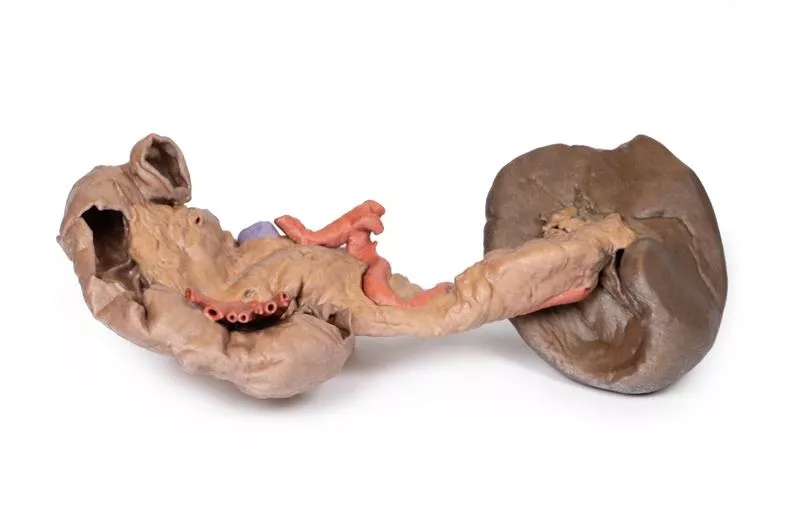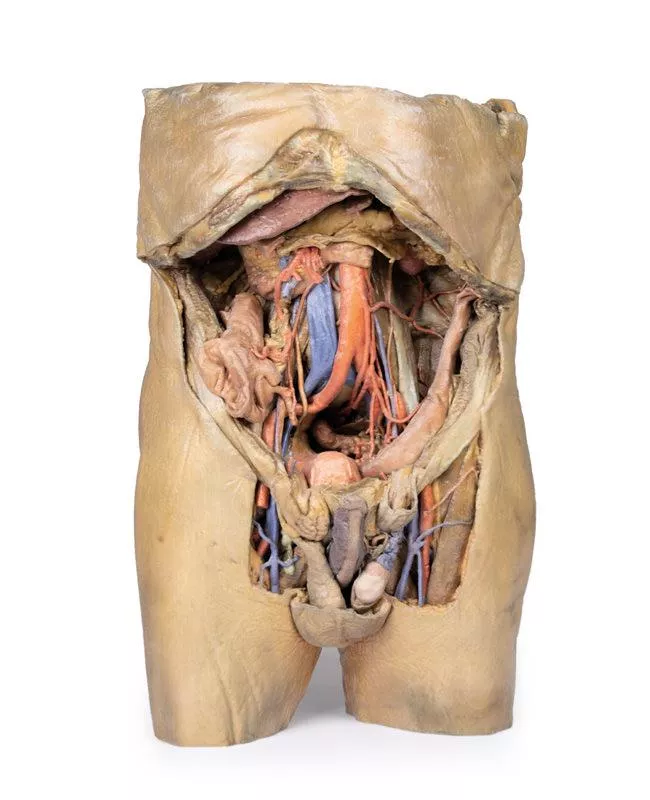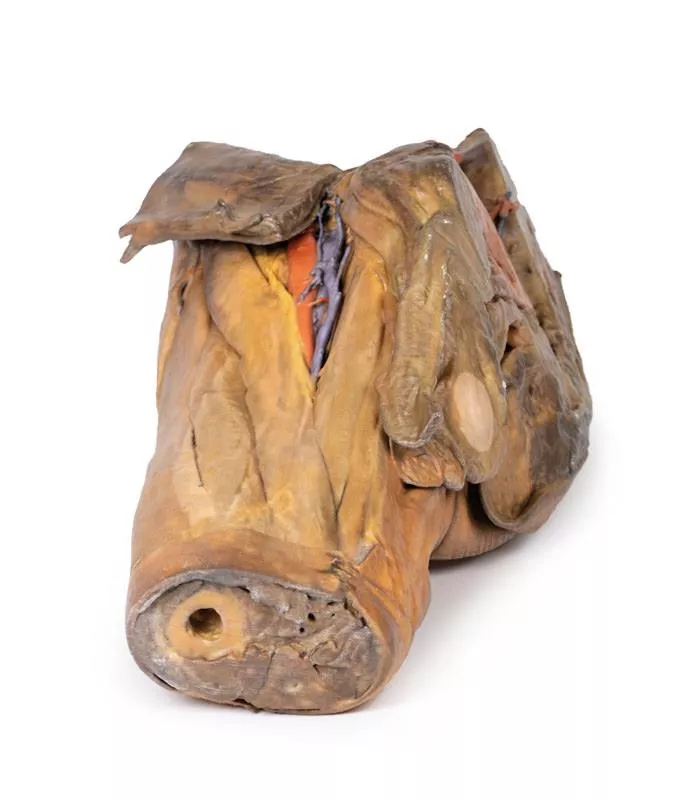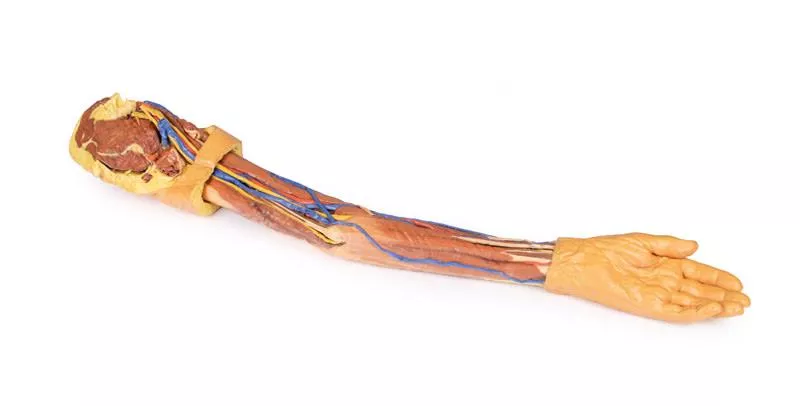Product information "Heart"
This 3D model depicts a life-sized adult heart with light dissection of the epicardium, offering a clear view of the coronary arteries, cardiac veins, and great vessels at the heart's base.
Key Anatomical Features:
Great Vessels:
- Superior vena cava and azygos vein drain into the right atrium.
- Aortic arch preserved, with two main branches:
- Pulmonary trunk and pulmonary arteries intact.
- Ligamentum arteriosum visible between the aortic arch and left pulmonary artery.
Coronary Arteries:
- Right coronary artery (RCA) descends from the ascending aorta, wrapping to the posterior interventricular sulcus.
- Left coronary artery (LCA) branches:
Venous Drainage:
Coronary sinus clearly preserved on the posterior heart surface, draining into the right atrium near the inferior vena cava.
Key Anatomical Features:
Great Vessels:
- Superior vena cava and azygos vein drain into the right atrium.
- Aortic arch preserved, with two main branches:
- A combined brachiocephalic trunk (giving rise to both right and left common carotid and right subclavian arteries).
- Left subclavian artery arising independently.
- Left subclavian artery arising independently.
- Pulmonary trunk and pulmonary arteries intact.
- Ligamentum arteriosum visible between the aortic arch and left pulmonary artery.
Coronary Arteries:
- Right coronary artery (RCA) descends from the ascending aorta, wrapping to the posterior interventricular sulcus.
- Left coronary artery (LCA) branches:
- Anterior interventricular artery (LAD) runs toward the apex.
- Diagonal branches dive into the myocardium.
- Circumflex artery runs posteriorly, near the great cardiac vein.
- Diagonal branches dive into the myocardium.
- Circumflex artery runs posteriorly, near the great cardiac vein.
Venous Drainage:
Coronary sinus clearly preserved on the posterior heart surface, draining into the right atrium near the inferior vena cava.
Erler-Zimmer
Erler-Zimmer GmbH & Co.KG
Hauptstrasse 27
77886 Lauf
Germany
info@erler-zimmer.de
Achtung! Medizinisches Ausbildungsmaterial, kein Spielzeug. Nicht geeignet für Personen unter 14 Jahren.
Attention! Medical training material, not a toy. Not suitable for persons under 14 years of age.







































